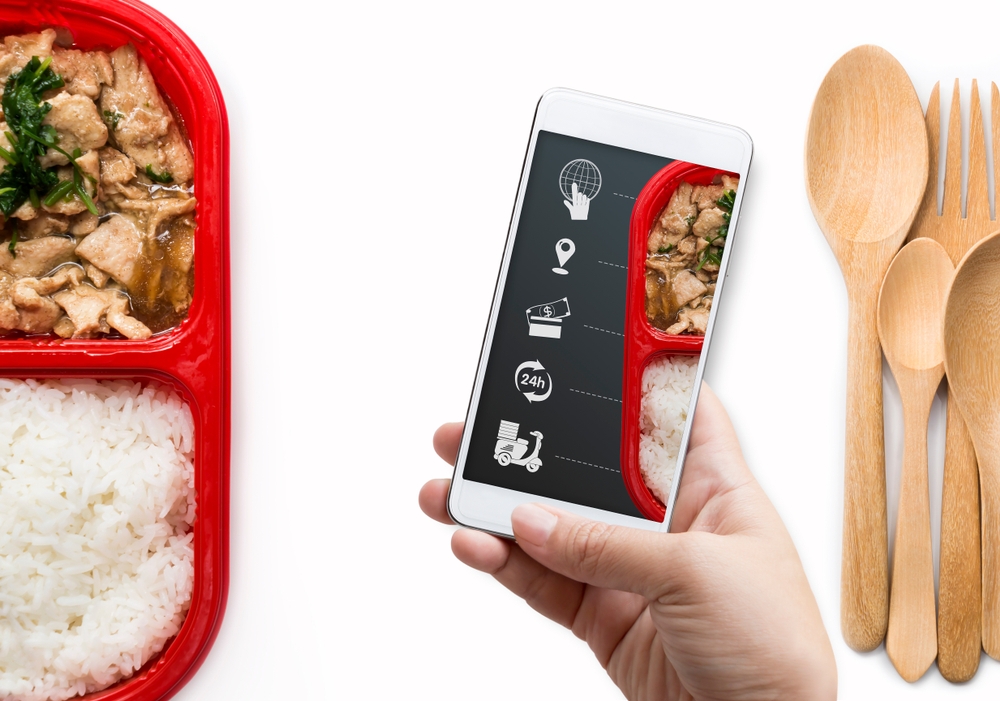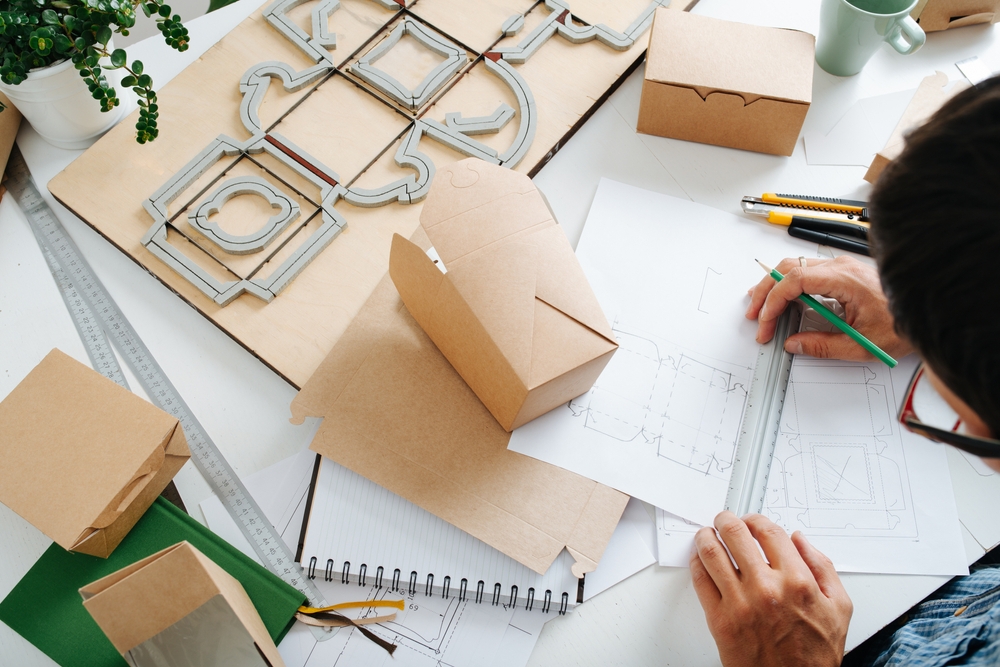Top Trends in Takeaway Packaging: Sustainability Meets Style
By Hamza Benhlima · 10. June 2024
Discover the latest trends in takeaway packaging that blend sustainability, technology, and design to redefine the takeaway experience.
This article zeroes in on eco-friendly materials, the arrival of smart packaging features, the clean appeal of minimalist design, and the crucial role of reusability.
We unveil the industry’s swift adaptation to these trends meant to satisfy consumer demand and environmental imperatives, offering direct insights without overwhelming detail, setting the stage for a deeper exploration throughout the article.
Sustainable Materials Take the Lead
 woman having a healthy vegan lunch in an eco lunch boxes delicious
woman having a healthy vegan lunch in an eco lunch boxes delicious
The takeaway packaging industry is undergoing a profound transformation, bringing sustainability to the forefront.
Driven by consumer demands and a shared commitment to reducing waste, sustainable materials are now the shining stars of the packaging industry.
From your local café to your favorite takeaway joint, the push towards sustainable choices is evident, with packaging materials reflecting this growing trend.
🌿 A remarkable 77% of consumers consider packaging sustainability a key factor influencing their choices, especially when it comes to food packaging.
This shift is fostering a new breed of packaging materials, including plant-based options and post-consumer recycled materials, that are not just eco-friendly but also stylish.
As a result, these food packaging trends are gaining momentum in the industry, contributing to improved sustainability and aligning with the overall packaging trends.
Plant-Based Packaging on the Rise
With the rise of plant-based materials like bamboo and cornstarch, the packaging industry is catering to the growing consumer demand for environmentally friendly options.
These materials aren’t just a green alternative to traditional packaging; they offer a reduced carbon footprint, less reliance on fossil fuels, and a touch of natural elegance that’s hard to resist.
🌱 The transition to plant-based packaging is reshaping our takeaway experiences, giving us a taste of the future, where sustainability and aesthetics coexist.
From the bamboo container carrying your favorite salad to the cornstarch box holding your sushi, the plant-based packaging trend is a testament to the power of innovation in meeting consumer expectations and adapting to food trends.
The Push for Post-Consumer Recycled Materials
While plant-based materials are making waves, there’s another sustainability heavyweight on the rise: post-consumer recycled (PCR) materials.
The push for PCR materials in packaging is driven by a perfect blend of consumer preferences, government regulations, and the need for responsible sourcing.
♻️ PCR materials such as kraft paper are making their mark as sustainable options for packaging, boasting 100% FSC certification and sourcing from responsibly managed forests.
So, not only are we reducing waste with each takeaway, but we’re also ensuring that our packaging materials have a second life in the circular economy.
Compostable Containers: Closing the Loop
While recycling is a significant step towards sustainability, compostable containers are taking it a notch higher, literally closing the loop on waste.
Ever had your coffee served in a compostable cup or your salad in a biodegradable container? If yes, you’ve experienced an eco-friendly convenience that’s transforming the takeaway industry.
🍃 With natural materials like seaweed providing a leakproof lining for food-to-go boxes and trays, we’re looking at an exciting future where plastics are replaced with compostable alternatives.
These innovations make the takeaway experience not just convenient but also kinder to our planet.
Smart Packaging Revolutionizes Takeaway Experience
 smart takeaway packaging
smart takeaway packaging
Just when you thought takeaway packaging couldn’t get any more exciting, enter smart packaging! This innovative trend, including interactive packaging, is revolutionising the takeaway industry, enabling brands to:
- Engage consumers
- Relay detailed product information
- Provide interactive experiences
- Enhance brand loyalty
In ways we never thought possible.
From QR codes to NFC and RFID tags, smart packaging technologies are enhancing food safety and traceability, offering a range of interactive experiences that make the takeaway experience more personalized.
📲 Remember, every time you scan a QR code on your food package, you’re not only getting product details, but you’re also a part of the next-gen packaging experience.
QR Codes Unlock Interactive Content
QR codes are no longer just black and white squares on packaging; they’re gateways to a world of interactive content.
By scanning these codes, you can dive into real-time information about your meal’s origins, nutritional content, and even serving suggestions, all at your fingertips.
📦 These codes act as educational tools, allowing you to understand the journey of your takeaway food from farm to table while keeping the packaging visuals clean and minimalist.
The takeaway experience is no longer just about the food; it’s about engaging with the story behind it.
Minimalist Designs Convey Modern Simplicity
 custom packaging design
custom packaging design
In the world of takeaway packaging, less is indeed more. Minimalist designs are making a big splash, conveying modern simplicity while enhancing the perceived value of a brand.
These designs focus on functionality, facilitating immediate consumer comprehension and conveying a brand’s message without distractions.
✨ By adopting minimalist packaging, we’re not just aligning with the modern aesthetics but also contributing to environmental benefits, reducing material usage and CO2 emissions during transit.
Not to mention, minimalist packaging also offers efficiency and cost-effectiveness by reducing packaging waste, making it a win-win for both consumers and businesses.
Clean Lines and Flat Graphics
Clean lines and flat graphics are the heart of minimalist packaging design, appealing to modern aesthetic tastes and emphasising brand recognition.
These designs put the brand’s logo centre stage, showcasing it against a minimalist background that exemplifies the trend towards simplification.
🖌️ Whether it’s a vibrant colour or strong typography, the minimalist approach ensures visual clarity, contributing to the overall modern aesthetic.
So, while your takeaway arrives in a minimalist package, remember, it’s not just about the clean lines and flat graphics; it’s about the brand story they convey.
Streamlined Functionality
While minimalist designs captivate our senses, streamlined functionality ensures a seamless user experience.
From clear labelling on takeaway containers to efficient designs that secure products adequately without the need for extra materials, streamlined functionality is the backbone of minimalist packaging.
📦 These designs improve the user experience by focusing on functionality without unnecessary additions.
So, as you enjoy your takeaway in a minimalist package, remember, every element of the design is there for a reason, contributing to an efficient, user-friendly experience.
Convenience and Reusability Merge
In the dynamic world of takeaway packaging, convenience and reusability are becoming inseparable.
As consumers, we’re increasingly leaning towards packaging that combines ease of use with a commitment to sustainability.
From refillable packaging options to returnable packaging, the boundaries of usability and eco-friendliness are being stretched, paving the way for a more sustainable future.
🌍 While these changes pose challenges for businesses, experts predict that identifying returnable packaging strategies can potentially reduce operational costs, making it a viable strategy for 2024 and beyond.
Bear in mind, every time you return your takeaway packaging, you’re actively participating in creating a more sustainable world.
Reusable Packaging Solutions Gain Popularity
With an eye on sustainability, reusable packaging solutions are gaining popularity. The concept of circular packaging is emerging, creating a closed-loop system for packaging to be reused or recycled.
Be it refillable glass jars or premium fabric bags, reusable packaging serves consumer needs while promoting sustainability.
♻️ While these options represent a shift towards sustainability, they also come with their own set of challenges.
However, with a significant portion of consumers willing to return their packaging if the costs were covered by the business, it’s a challenge worth tackling.
Transparency Builds Trust and Appeals to Aesthetics
In the world of takeaway packaging, what you see is what you get! Transparency in packaging is building trust and appealing to aesthetics like never before.
It allows consumers to evaluate product freshness and quality, enhancing visual appeal and building consumer trust.
🔍 This trend is driven by consumers’ desire for assurance of food quality and freshness, making transparency a key feature for attracting attention in the marketplace.
From setting realistic expectations to improving perceived trustworthiness and quality, transparent packaging is making a clear statement in the industry.
Visual Verification of Freshness
Transparent packaging isn’t just visually appealing; it allows for visual verification of freshness.
Luxury food brands are utilising window boxes with transparent windows to differentiate their products, facilitating a visual verification of freshness that appeals to discerning consumers.
🍱 Whether it’s showcasing the natural colours of kombucha or creating a visual treat with dynamic animations and intricate visual elements on transparent windows, transparent packaging is transforming the way we perceive and interact with our food.
A Window into Culinary World
With transparent packaging, you’re not just looking at a product; you’re peering into the culinary world.
These windows into the world of food showcase attractive food items, fostering trust in product quality and engaging consumers on a deeper level.
🍽️ Transparent packaging sets the stage for a visual journey, allowing us to appreciate the artistry of our meals before we even take a bite.
Each time you look through the clear packaging of your food, remember, you’re not merely observing your meal; you’re getting a glimpse into the culinary arts!
Accessible Design for All
Accessibility isn’t just about building ramps or creating wider parking spaces; it’s about making everyday items easier to use for everyone, and packaging is no exception.
Accessible packaging is designed to be easy to open and use by all individuals, regardless of their physical abilities, ensuring that no one is left out of the consumer journey.
♿ Brands are prioritising accessible packaging, ensuring clear labelling and easy-to-handle designs that cater to people with disabilities.
By focusing on accessibility, brands are not just enhancing user experience, they’re expanding their market reach to include millions of differently abled individuals and an ageing population.
Frequently Asked Questions
What is driving the trend of sustainable materials in takeaway packaging?
Consumer demands and a shared commitment to reducing waste and environmental impact are driving the trend of sustainable materials in takeaway packaging. It’s all about meeting the demand for eco-friendly options!
How does minimalist packaging contribute to environmental benefits?
Minimalist packaging not only reduces material usage and CO2 emissions during transit but also offers efficiency and cost-effectiveness by minimising packaging waste. It’s a win-win for the environment and your wallet!
How does transparent packaging build consumer trust?
Transparent packaging builds consumer trust by allowing them to evaluate product freshness and quality, enhancing visual appeal, and setting realistic expectations to reduce the likelihood of feeling misled. So, next time you see a transparent package, trust that what’s inside is as good as it looks!

